

Inaugurated in 1992, the MCP program is hosted by the Department of Pathology and takes advantage of its unique position in a department that bridges basic and clinical sciences to encourage interdisciplinary projects and interdepartmental cooperation. Indeed, the Department of Pathology is also home to a large and diverse group of >180 faculty members, including basic science researchers, physician-scientists, and clinicians. This well-funded (ranked #9 nationwide for NIH support) and collaborative environment provides a unique opportunity for the ~30 students enrolled in the MCP program to perform transformative research, ranging from basic to translational research.
MCP students train in one of the >35 MCP research labs under the supervision of an exceptional team of MCP faculty mentors, co-mentors, and senior staff/trainees, and are immersed in a research environment that features internationally renowned professors. Many of our faculty members hold joint appointments with other biomedical science departments and graduate programs at the University of Michigan, offering students an interdisciplinary approach to their training.
Using a wide range of experimental approaches to understand the pathogenesis of human diseases, the research areas of interest in the MCP program include:
MCP students produce high-quality research that has resulted in publications in top-tier journals, present their work at multiple venues not only at the University of Michigan but also at national and international conferences, and are the recipients of prestigious awards and fellowships from the NIH, professional societies or disease foundations MCP students typically receive their Ph.D. within 5 to 6 years (5.2 years on average).
The city of Ann Arbor has an abundance of cultural and athletic offerings for residents. In addition to the University of Michigan Museum of Art, The Kelsey Museum of Archaeology, and The Museum of Natural History, the University Musical Society offers an excellent selection of concerts and theatrical productions each year. More information on these activities. The University of Michigan also has a diverse Recreational Sports Department which offers many intramural sports including ultimate Frisbee, soccer, softball, sand volleyball, broomball, dodgeball, basketball, and flag football. More information about intramural sports. Work-out facilities are available throughout campus and are available for student use.
Training Program in Translational Pathology T32 - The Training Program in Translational Research offers an interdisciplinary program of study and research that prepares graduate students for successful careers at the interface between basic biomedical science and clinical medicine. This program is designed for predoctoral Ph.D. students and aims to address the widely recognized shortage of rigorously trained scientists who can successfully work together with medical professionals to bridge the gap between basic science and clinical practice. Along with additional coursework in translational pathology, trainees participate in a mentored clinical rotation in an area relevant to their thesis research, complementing the experimental work with exposure to relevant problems in the clinic.
T32 Proteomics - The training program in Advanced Proteome Informatics of Cancer, funded by the National Cancer Institute, supports students performing graduate cancer-related research and provides training for proteome informatics research. The National Cancer Institute has made a substantial investment in new technology platforms for cancer proteomics, especially through the Mouse Models of Human Cancers and the Clinical Proteomic Technologies for Cancer and this investment is expected to result in greatly increased application of proteomics to cancer research.
Information about the application process and program requirements can be found at www.ccmb.med.umich.edu.
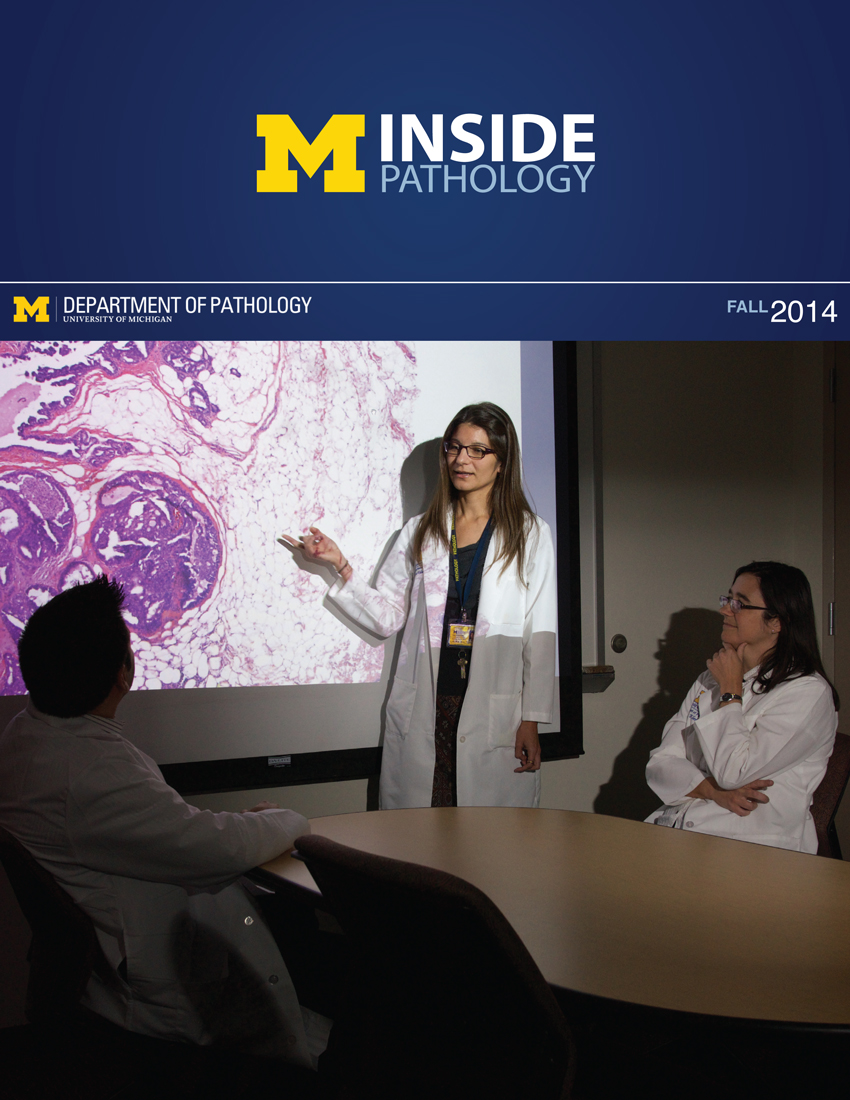 ON THE COVER
ON THE COVER
Breast team reviewing a patient's slide. (From left to right) Ghassan Allo, Fellow; Laura Walters, Clinical Lecturer; Celina Kleer, Professor. See Article 2014Department Chair |

newsletter
INSIDE PATHOLOGYAbout Our NewsletterInside Pathology is an newsletter published by the Chairman's Office to bring news and updates from inside the department's research and to become familiar with those leading it. It is our hope that those who read it will enjoy hearing about those new and familiar, and perhaps help in furthering our research. CONTENTS
|
 ON THE COVER
ON THE COVER
Autopsy Technician draws blood while working in the Wayne County morgue. See Article 2016Department Chair |

newsletter
INSIDE PATHOLOGYAbout Our NewsletterInside Pathology is an newsletter published by the Chairman's Office to bring news and updates from inside the department's research and to become familiar with those leading it. It is our hope that those who read it will enjoy hearing about those new and familiar, and perhaps help in furthering our research. CONTENTS
|
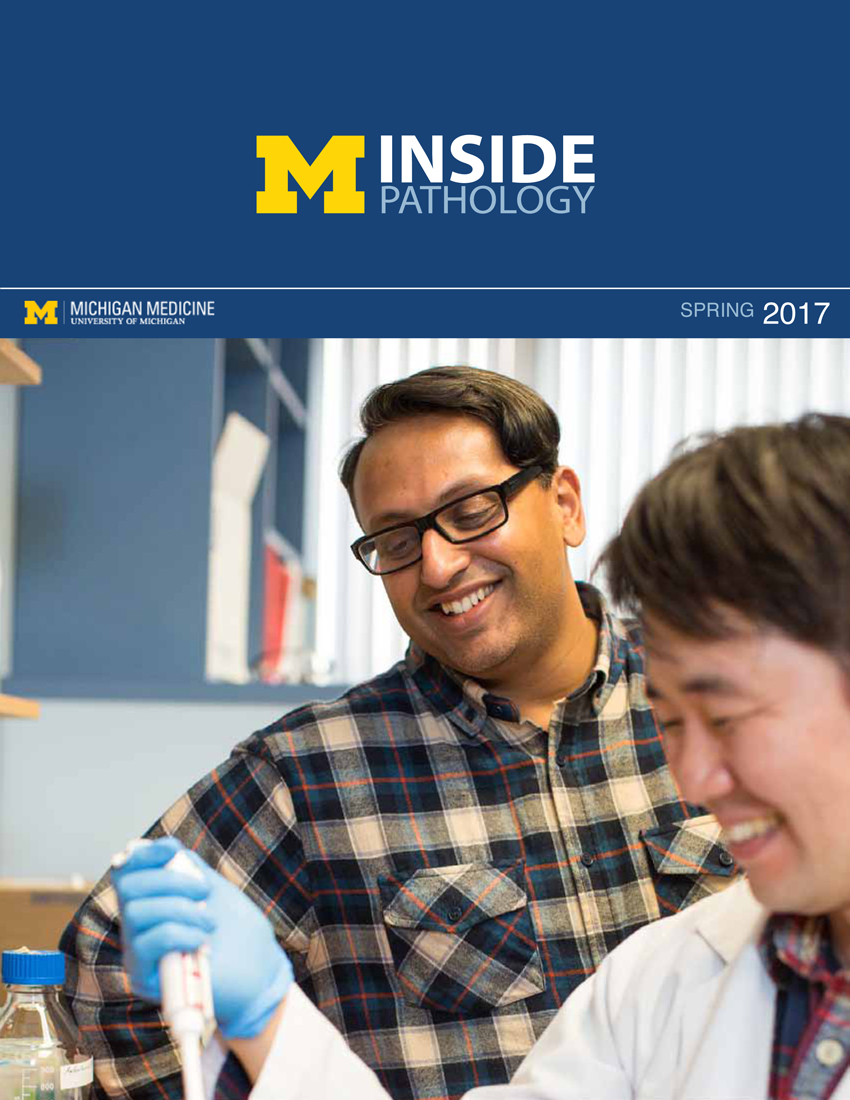 ON THE COVER
ON THE COVER
Dr. Sriram Venneti, MD, PhD and Postdoctoral Fellow, Chan Chung, PhD investigate pediatric brain cancer. See Article 2017Department Chair |

newsletter
INSIDE PATHOLOGYAbout Our NewsletterInside Pathology is an newsletter published by the Chairman's Office to bring news and updates from inside the department's research and to become familiar with those leading it. It is our hope that those who read it will enjoy hearing about those new and familiar, and perhaps help in furthering our research. CONTENTS
|
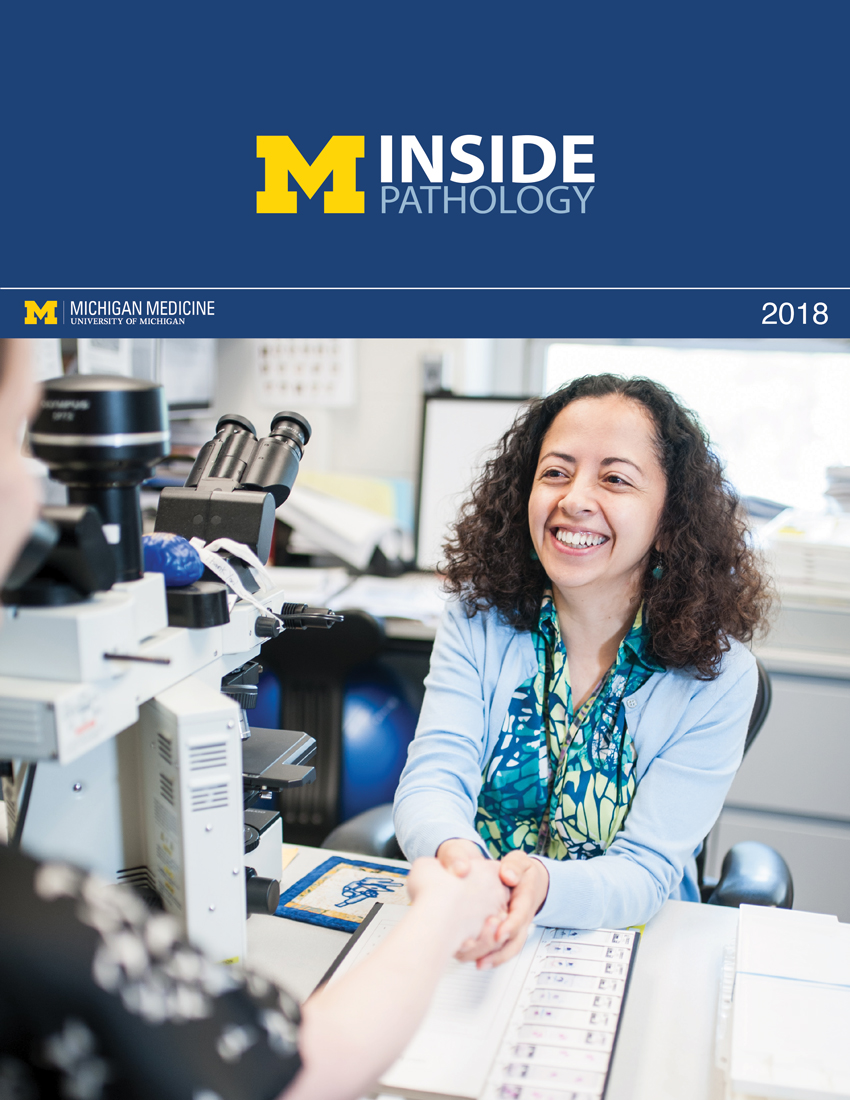 ON THE COVER
ON THE COVER
Director of the Neuropathology Fellowship, Dr. Sandra Camelo-Piragua serves on the Patient and Family Advisory Council. 2018Department Chair |

newsletter
INSIDE PATHOLOGYAbout Our NewsletterInside Pathology is an newsletter published by the Chairman's Office to bring news and updates from inside the department's research and to become familiar with those leading it. It is our hope that those who read it will enjoy hearing about those new and familiar, and perhaps help in furthering our research. CONTENTS
|
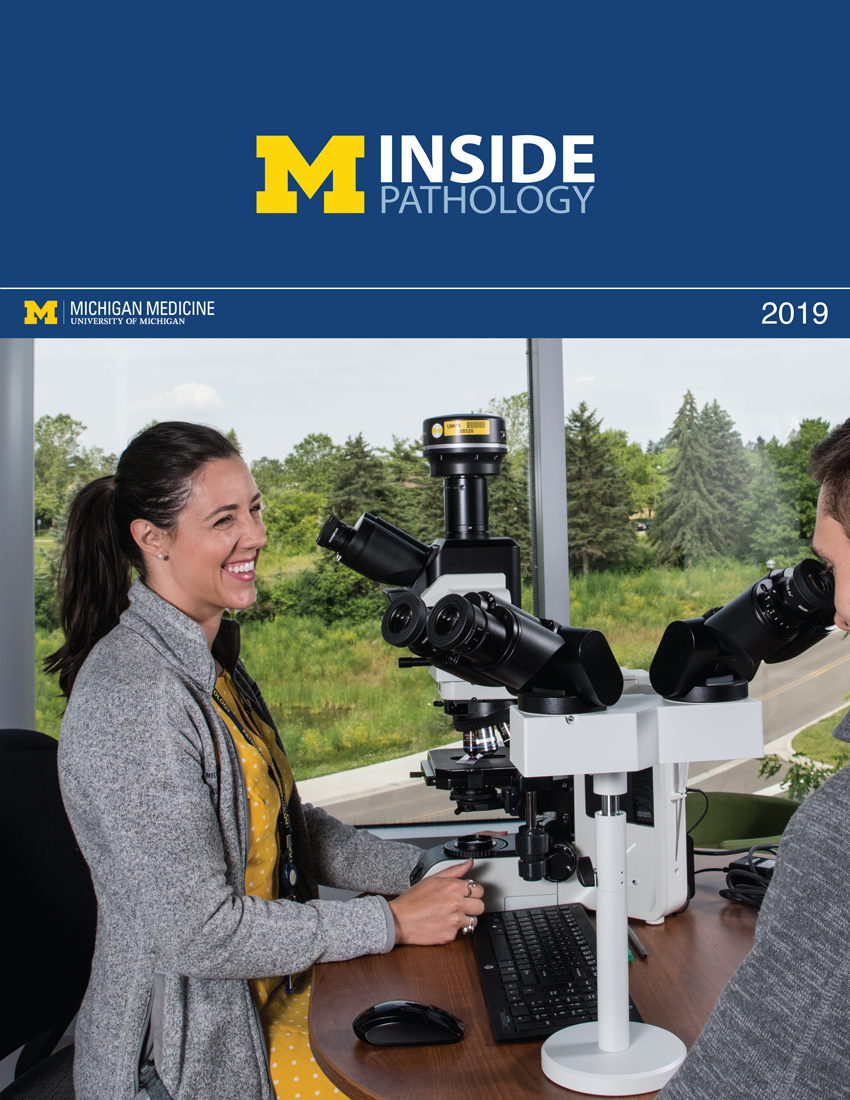 ON THE COVER
ON THE COVER
Residents Ashley Bradt (left) and William Perry work at a multi-headed scope in our new facility. 2019Department Chair |

newsletter
INSIDE PATHOLOGYAbout Our NewsletterInside Pathology is an newsletter published by the Chairman's Office to bring news and updates from inside the department's research and to become familiar with those leading it. It is our hope that those who read it will enjoy hearing about those new and familiar, and perhaps help in furthering our research. CONTENTS
|
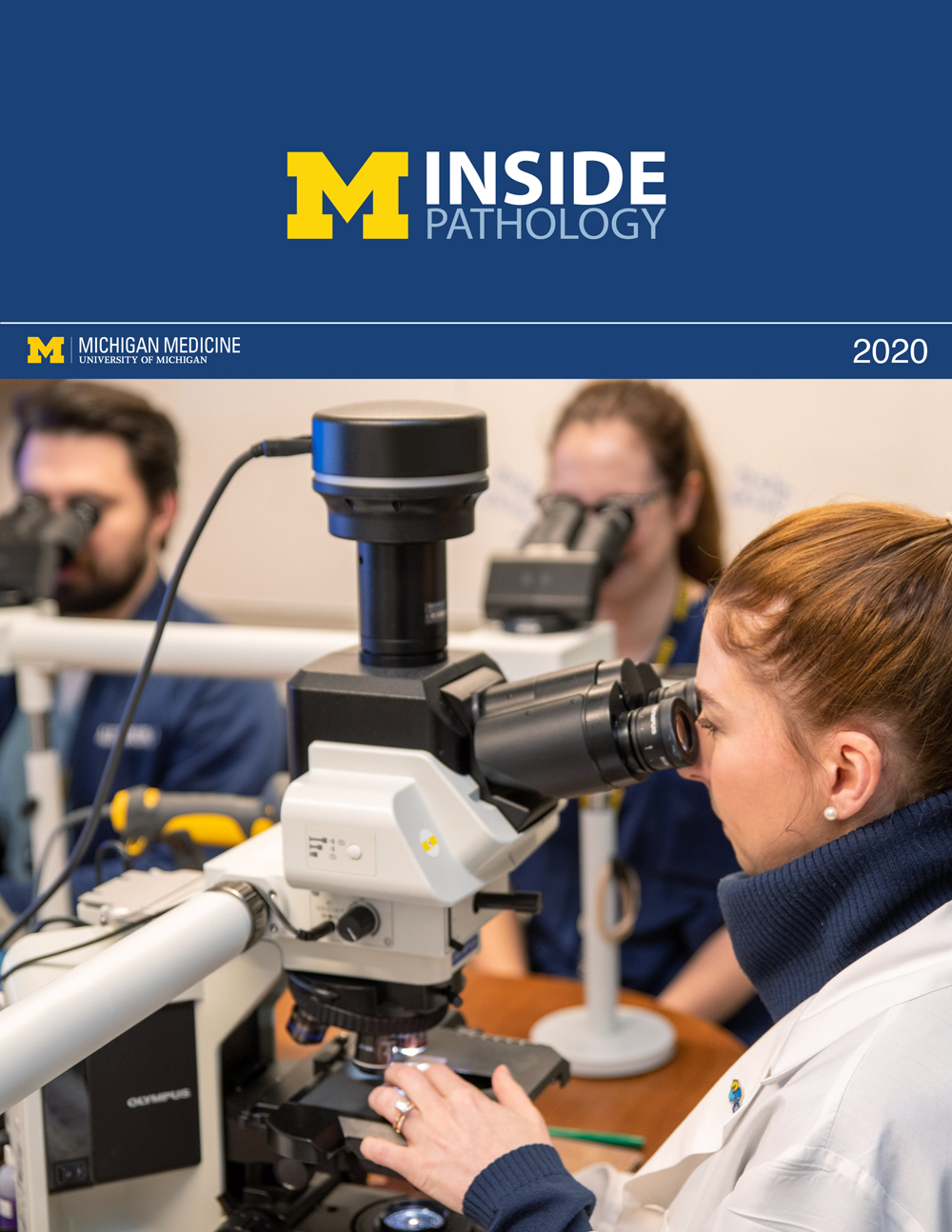 ON THE COVER
ON THE COVER
Dr. Kristine Konopka (right) instructing residents while using a multi-headed microscope. 2020Department Chair |

newsletter
INSIDE PATHOLOGYAbout Our NewsletterInside Pathology is an newsletter published by the Chairman's Office to bring news and updates from inside the department's research and to become familiar with those leading it. It is our hope that those who read it will enjoy hearing about those new and familiar, and perhaps help in furthering our research. CONTENTS
|
 ON THE COVER
ON THE COVER
Patient specimens poised for COVID-19 PCR testing. 2021Department Chair |

newsletter
INSIDE PATHOLOGYAbout Our NewsletterInside Pathology is an newsletter published by the Chairman's Office to bring news and updates from inside the department's research and to become familiar with those leading it. It is our hope that those who read it will enjoy hearing about those new and familiar, and perhaps help in furthering our research. CONTENTS
|
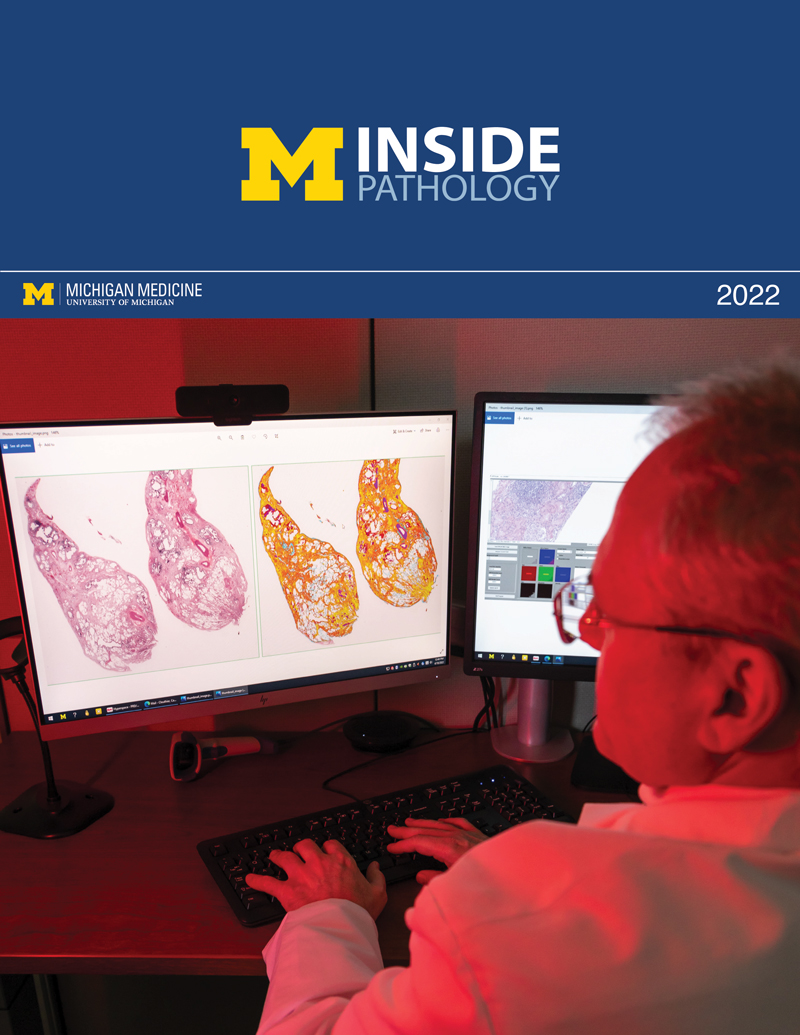 ON THE COVER
ON THE COVER
Dr. Pantanowitz demonstrates using machine learning in analyzing slides. 2022Department Chair |

newsletter
INSIDE PATHOLOGYAbout Our NewsletterInside Pathology is an newsletter published by the Chairman's Office to bring news and updates from inside the department's research and to become familiar with those leading it. It is our hope that those who read it will enjoy hearing about those new and familiar, and perhaps help in furthering our research. CONTENTS
|
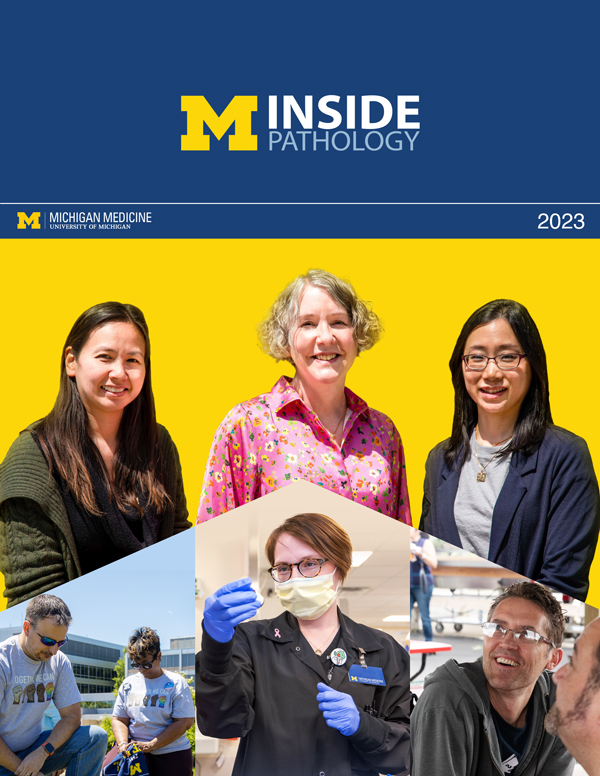 ON THE COVER
ON THE COVER
(Left to Right) Drs. Angela Wu, Laura Lamps, and Maria Westerhoff. 2023Department Chair |

newsletter
INSIDE PATHOLOGYAbout Our NewsletterInside Pathology is an newsletter published by the Chairman's Office to bring news and updates from inside the department's research and to become familiar with those leading it. It is our hope that those who read it will enjoy hearing about those new and familiar, and perhaps help in furthering our research. CONTENTS
|
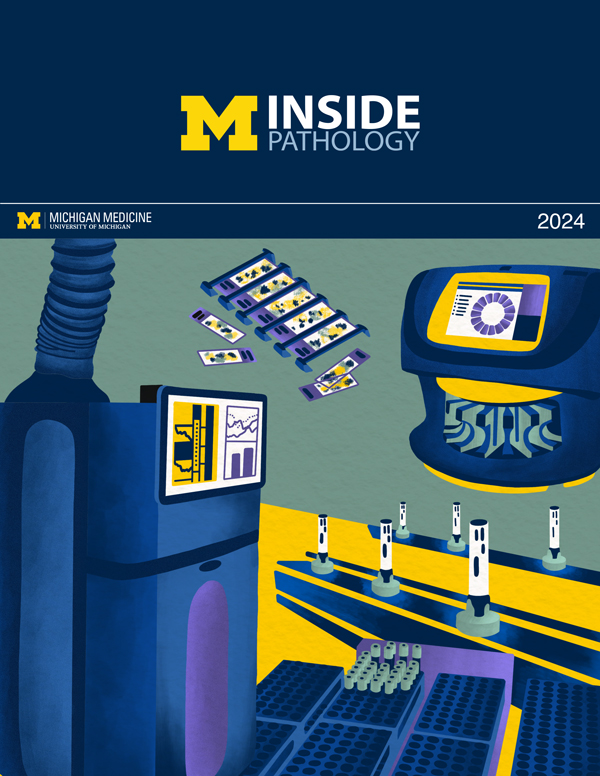 ON THE COVER
ON THE COVER
Illustration representing the various machines and processing used within our labs. 2024Department Chair |

newsletter
INSIDE PATHOLOGYAbout Our NewsletterInside Pathology is an newsletter published by the Chairman's Office to bring news and updates from inside the department's research and to become familiar with those leading it. It is our hope that those who read it will enjoy hearing about those new and familiar, and perhaps help in furthering our research. CONTENTS
|
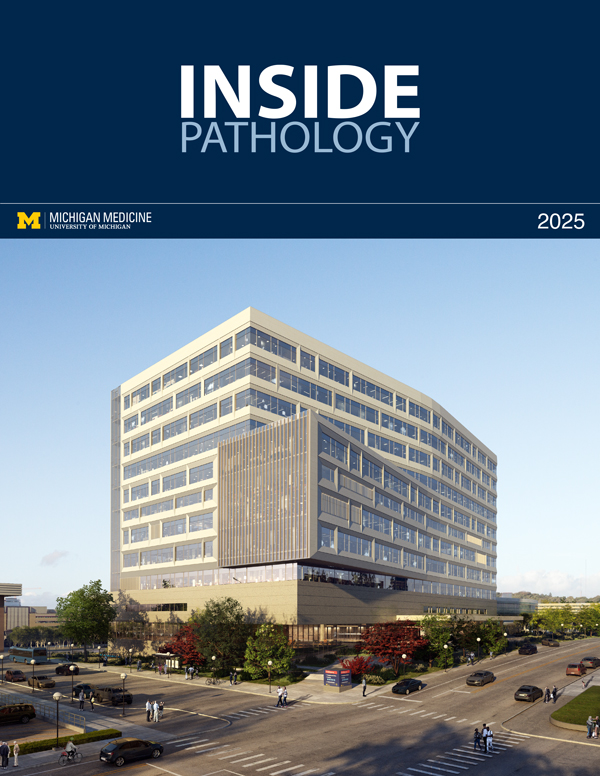 ON THE COVER
ON THE COVER
Rendering of the D. Dan and Betty Khn Health Care Pavilion. Credit: HOK 2025Department Chair |

newsletter
INSIDE PATHOLOGYAbout Our NewsletterInside Pathology is an newsletter published by the Chairman's Office to bring news and updates from inside the department's research and to become familiar with those leading it. It is our hope that those who read it will enjoy hearing about those new and familiar, and perhaps help in furthering our research. CONTENTS
|

MLabs, established in 1985, functions as a portal to provide pathologists, hospitals. and other reference laboratories access to the faculty, staff and laboratories of the University of Michigan Health System’s Department of Pathology. MLabs is a recognized leader for advanced molecular diagnostic testing, helpful consultants and exceptional customer service.